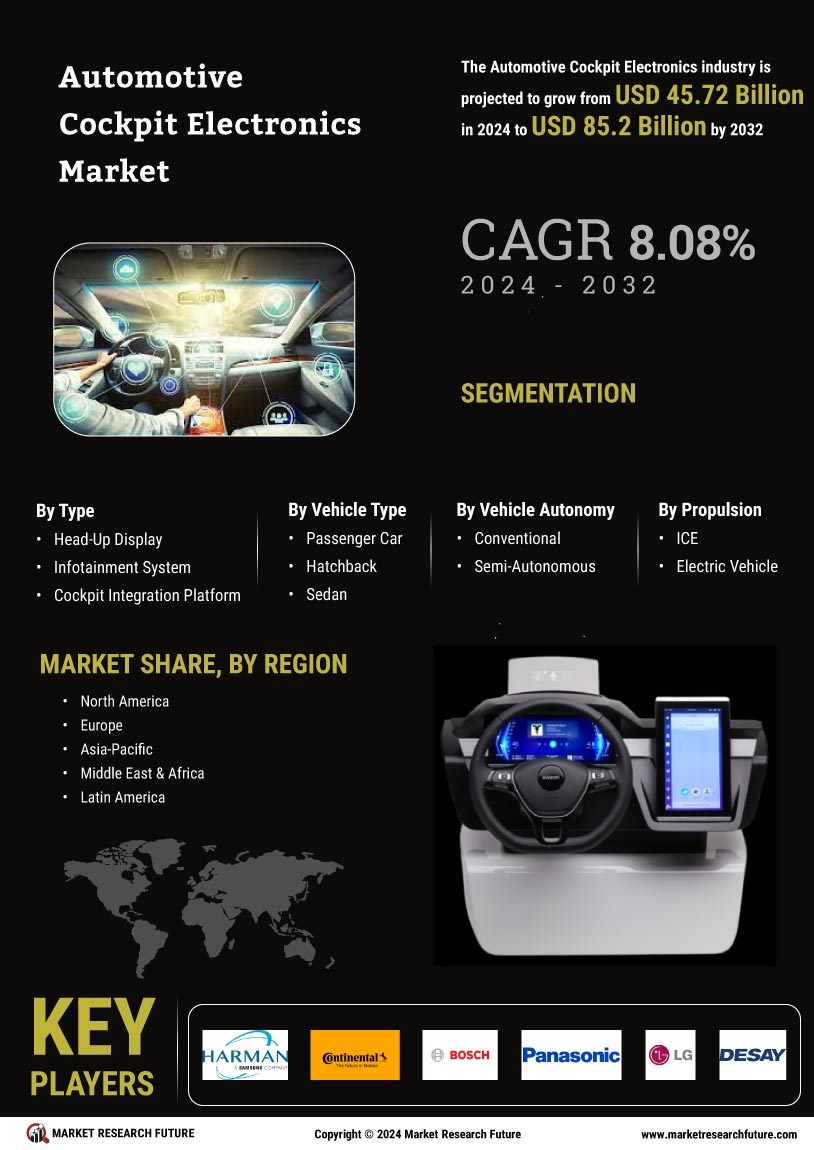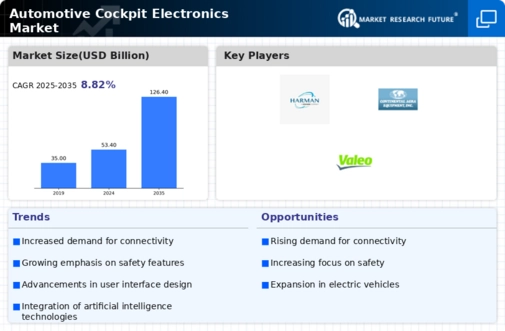The Automotive Cockpit Electronics Market is currently characterized by a dynamic competitive landscape, driven by rapid technological advancements and increasing consumer demand for enhanced in-vehicle experiences. Key players such as Robert Bosch GmbH (Germany), Denso Corporation (Japan), and Harman International (US) are strategically positioned to leverage innovation and partnerships to maintain their competitive edge. For instance, Robert Bosch GmbH (Germany) focuses on integrating advanced driver-assistance systems (ADAS) with cockpit electronics, thereby enhancing safety and user experience. Similarly, Denso Corporation (Japan) emphasizes the development of connected vehicle technologies, which aligns with the growing trend towards digitalization in automotive environments. These strategies collectively shape a competitive environment that is increasingly reliant on technological innovation and strategic collaborations.
In terms of business tactics, companies are localizing manufacturing and optimizing supply chains to enhance efficiency and responsiveness to market demands. The market structure appears moderately fragmented, with several key players exerting influence over various segments. This fragmentation allows for a diverse range of products and services, fostering competition that drives innovation and quality improvements across the sector.
In November 2025, Harman International (US) announced a partnership with a leading automotive manufacturer to develop a next-generation infotainment system that integrates AI-driven features. This strategic move is significant as it positions Harman at the forefront of the digital transformation trend, enabling them to offer personalized user experiences that are increasingly sought after by consumers. The collaboration is expected to enhance Harman's market share and reinforce its reputation as a leader in automotive technology.
In October 2025, Denso Corporation (Japan) unveiled a new line of cockpit electronics designed to improve energy efficiency and reduce emissions in vehicles. This initiative reflects Denso's commitment to sustainability and aligns with global regulatory trends aimed at reducing the environmental impact of automotive technologies. By focusing on eco-friendly solutions, Denso is likely to attract environmentally conscious consumers and strengthen its competitive position in the market.
In September 2025, Robert Bosch GmbH (Germany) expanded its research and development facilities in North America, aiming to accelerate the development of smart cockpit technologies. This expansion is indicative of Bosch's strategy to enhance its innovation capabilities and respond to the growing demand for advanced automotive electronics. By investing in R&D, Bosch is positioning itself to lead in the development of next-generation cockpit solutions that integrate seamlessly with emerging technologies.
As of December 2025, current competitive trends in the Automotive Cockpit Electronics Market are heavily influenced by digitalization, sustainability, and AI integration. Strategic alliances are increasingly shaping the landscape, as companies recognize the need for collaboration to drive innovation and meet evolving consumer expectations. The competitive differentiation is likely to evolve from traditional price-based competition towards a focus on technological innovation, reliability of supply chains, and the ability to deliver unique, high-quality experiences to consumers. This shift underscores the importance of adaptability and foresight in navigating the complexities of the automotive electronics market.

















Leave a Comment